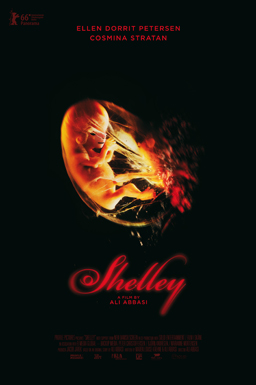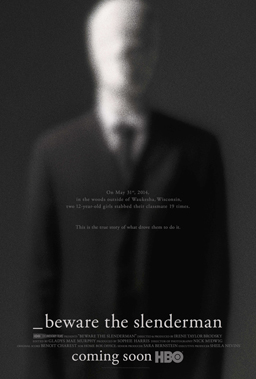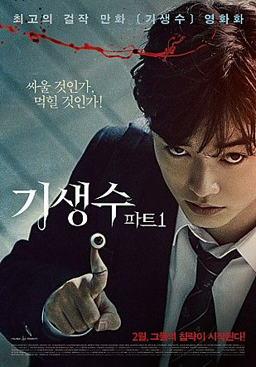Fantasia 2016, Day 10 Part 1: Sequels and New-Told Tales (Assassination Classroom: Graduation, Revoltoso, Nova Seed, and the Samsung Virtual Reality Experience)
 Saturday, July 23, was going to be a long day for me at the Fantasia film festival, filled with some tough choices about what to watch. Some of those choices were clarified early on, when thanks to the good work of the people at Fantasia I was able to watch a screener of Assassination Classroom: The Graduation. That resolved a schedule conflict later in the day, and just after noon I’d see my first theatrical screening: Nova Seed, a Canadian animated feature that was playing with an almost half-hour-long short film from Mexico, Revoltoso. After that I had a couple hours until the next set of movies, and I planned to get a good meal. This did not happen. Instead I’d end up taking a test drive of the future — or what seems to me like the future, or at least like a future.
Saturday, July 23, was going to be a long day for me at the Fantasia film festival, filled with some tough choices about what to watch. Some of those choices were clarified early on, when thanks to the good work of the people at Fantasia I was able to watch a screener of Assassination Classroom: The Graduation. That resolved a schedule conflict later in the day, and just after noon I’d see my first theatrical screening: Nova Seed, a Canadian animated feature that was playing with an almost half-hour-long short film from Mexico, Revoltoso. After that I had a couple hours until the next set of movies, and I planned to get a good meal. This did not happen. Instead I’d end up taking a test drive of the future — or what seems to me like the future, or at least like a future.
First, Assassination Classroom: The Graduation, directed (like the first live-action Assassination Classroom film) by Eiichiro Hasumi, from a script by Tatsuya Kanazawa based on a manga by Yuusei Matsui. I saw part one of the Assassination Classroom story last year at Fantasia and loved it. A whirlwind science-fiction comedy, it followed a high school class in Japan filled with underachievers, given the mission to kill their new teacher before the end of the school year. That professor, dubbed “UT” for “Unkillable Teacher,” was a grinning yellow smiley-face with tentacles who could move at supersonic speeds and had already blown up the moon. The more the movie went on the more imaginative and frenetic it got, adding characters and sub-plots with abandon.
The second movie keeps some of the same tone, but immediately begins deepening it: the students have to start thinking about their career paths, letting us know that their time with UT is almost up one way or another. A school festival starts out with the same surrealist humour as the first movie, as a government sniper attempts to infiltrate the festival to kill UT — who in the meanwhile has cast himself as the lead in a stage performance of the Momotaro story. Again, though, some of the goings-on here are darker, as two of the girls are briefly taken prisoner by older boys demanding sexy pictures. The girls rescue themselves, but the tone’s definitely taken a turn.
 Weekends are busy at the Fantasia International Film Festival, and Friday, July 22, saw things beginning to ramp up for me after a slow few days. After much internal debate, I decided to see three movies, all of them horror films of different kinds. First came the Danish film Shelley, at the Hall theatre, about sinister events around a surrogate mother in an isolated household. Then would come a Japanese film, The Inerasable (Zange —Sunde wa Ikanai Heya), about two women investigating a ghost manifesting in an urban apartment. Finally would come an animated Korean zombie movie, Seoul Station (Seoulyeok). They promised three very different tones. And, as it turned out, delivered nicely.
Weekends are busy at the Fantasia International Film Festival, and Friday, July 22, saw things beginning to ramp up for me after a slow few days. After much internal debate, I decided to see three movies, all of them horror films of different kinds. First came the Danish film Shelley, at the Hall theatre, about sinister events around a surrogate mother in an isolated household. Then would come a Japanese film, The Inerasable (Zange —Sunde wa Ikanai Heya), about two women investigating a ghost manifesting in an urban apartment. Finally would come an animated Korean zombie movie, Seoul Station (Seoulyeok). They promised three very different tones. And, as it turned out, delivered nicely. There was one movie scheduled at Fantasia on Thursday, July 21 that I was determined to see: a science-fiction anime called Harmony (Hamoni). Since I had time free beforehand, I decided I’d first head to the festival’s screening room to watch something I’d missed or would be unable to see later. There, I looked over the selection available and settled on Psychonauts, the Forgotten Children (Psiconautas, los niños olvidados), an animated film from Spain. I liked the idea of a double feature of two very different cartoons.
There was one movie scheduled at Fantasia on Thursday, July 21 that I was determined to see: a science-fiction anime called Harmony (Hamoni). Since I had time free beforehand, I decided I’d first head to the festival’s screening room to watch something I’d missed or would be unable to see later. There, I looked over the selection available and settled on Psychonauts, the Forgotten Children (Psiconautas, los niños olvidados), an animated film from Spain. I liked the idea of a double feature of two very different cartoons. As I’ve said before, sometimes the movies I see at Fantasia on a given day have a common theme. And sometimes they don’t, however much it might look like they ought to. On Wednesday, July 20, I’d go downtown to the Hall Theatre to watch an oddity: a restored Japanese propaganda cartoon from World War II, Momotaro, Sacred Sailors (Momotaro, Umi No Shinpei). Then I planned to head across the street to the De Sève and watch an independent American horror film, The Alchemist Cookbook. I hoped to make it back to the Hall after that in time to watch the second in a series of Japanese science-fiction action movies, Library Wars: The Last Mission (Toshokan Sanso: The Last Mission). It looked like a packed day, and I wondered how the movies would play off of each other.
As I’ve said before, sometimes the movies I see at Fantasia on a given day have a common theme. And sometimes they don’t, however much it might look like they ought to. On Wednesday, July 20, I’d go downtown to the Hall Theatre to watch an oddity: a restored Japanese propaganda cartoon from World War II, Momotaro, Sacred Sailors (Momotaro, Umi No Shinpei). Then I planned to head across the street to the De Sève and watch an independent American horror film, The Alchemist Cookbook. I hoped to make it back to the Hall after that in time to watch the second in a series of Japanese science-fiction action movies, Library Wars: The Last Mission (Toshokan Sanso: The Last Mission). It looked like a packed day, and I wondered how the movies would play off of each other. Sometimes the movies I get to see on a given day at Fantasia have an obvious common theme. Sometimes not. Sometimes there’s a commonality binding two otherwise different movies, but it’s tenuous. So it was that on Tuesday, July 19, I watched a Korean historical drama called The Throne (originally Sado), and followed it with a Polish musical-fantasy-tragicomedy called The Lure (originally Córki dancingu). They’re both films based on older stories, in the first case recorded history from the eighteenth century, and in the second Hans Christian Andersen’s fairy tale “The Little Mermaid.” As you might imagine from those two very different source materials, these are very different movies in very different genres. But it also seemed to me that the process of retelling the stories was very different as well.
Sometimes the movies I get to see on a given day at Fantasia have an obvious common theme. Sometimes not. Sometimes there’s a commonality binding two otherwise different movies, but it’s tenuous. So it was that on Tuesday, July 19, I watched a Korean historical drama called The Throne (originally Sado), and followed it with a Polish musical-fantasy-tragicomedy called The Lure (originally Córki dancingu). They’re both films based on older stories, in the first case recorded history from the eighteenth century, and in the second Hans Christian Andersen’s fairy tale “The Little Mermaid.” As you might imagine from those two very different source materials, these are very different movies in very different genres. But it also seemed to me that the process of retelling the stories was very different as well. I had only one movie on my schedule for Monday, July 18, but thanks to the good offices of the people at the Fantasia Film Festival and at Oscilloscope Laboratories, I ended up able to catch another film first. The Love Witch was a movie that I’d been unable to watch in its theatrical showing at Fantasia due to a scheduling conflict. After seeing it Monday, I’d go on to the Hall Theatre for The Wailing (Goksung), a two-and-a-half hour Korean horror film. The movies made for an odd contrast. In both cases I greatly appreciated them but came away fairly sure I wasn’t part of their primary audience. But movies play to whoever sees them, and perhaps writing about these films will bring them to the attention of people with better perspectives than my own.
I had only one movie on my schedule for Monday, July 18, but thanks to the good offices of the people at the Fantasia Film Festival and at Oscilloscope Laboratories, I ended up able to catch another film first. The Love Witch was a movie that I’d been unable to watch in its theatrical showing at Fantasia due to a scheduling conflict. After seeing it Monday, I’d go on to the Hall Theatre for The Wailing (Goksung), a two-and-a-half hour Korean horror film. The movies made for an odd contrast. In both cases I greatly appreciated them but came away fairly sure I wasn’t part of their primary audience. But movies play to whoever sees them, and perhaps writing about these films will bring them to the attention of people with better perspectives than my own. Sunday, July 17, began early for me. I went down to the Hall Theatre to watch Parasyte: Part 2 (I’ve written about it
Sunday, July 17, began early for me. I went down to the Hall Theatre to watch Parasyte: Part 2 (I’ve written about it  Saturday, July 16, began early for me. I headed downtown to the Hall Theatre for an 11:05 showing of Parasyte: Part 1 (Kiseiju), the first instalment of a Japanese science-fiction–horror duology. After that I planned to head to the festival screening room; I hoped to see La Rage du Démon (Fury of the Demon), a French horror mockumentary that mixes film pioneer Georges Méliès, occultism, and legends of mass hysteria into the story of a cursed silent movie. Then I’d head back to the Hall for a showing of For the Love of Spock, a documentary about Leonard Nimoy and his most famous role, hosted by the director, Nimoy’s son Adam. I’d wrap up the night with Terraformars, a science-fiction film directed by Takashi Miike about humans battling genetically-modified cockroaches on the surface of Mars. Miike would be present to host a question-and-answer session and receive Fantasia’s Lifetime Achievement Award.
Saturday, July 16, began early for me. I headed downtown to the Hall Theatre for an 11:05 showing of Parasyte: Part 1 (Kiseiju), the first instalment of a Japanese science-fiction–horror duology. After that I planned to head to the festival screening room; I hoped to see La Rage du Démon (Fury of the Demon), a French horror mockumentary that mixes film pioneer Georges Méliès, occultism, and legends of mass hysteria into the story of a cursed silent movie. Then I’d head back to the Hall for a showing of For the Love of Spock, a documentary about Leonard Nimoy and his most famous role, hosted by the director, Nimoy’s son Adam. I’d wrap up the night with Terraformars, a science-fiction film directed by Takashi Miike about humans battling genetically-modified cockroaches on the surface of Mars. Miike would be present to host a question-and-answer session and receive Fantasia’s Lifetime Achievement Award. Friday, July 15, began early for me. I headed down to Fantasia’s De Sève Theatre to watch a 2 PM press conference with the winner of this year’s
Friday, July 15, began early for me. I headed down to Fantasia’s De Sève Theatre to watch a 2 PM press conference with the winner of this year’s  Thursday, June 14: as good a day as any to begin an adventure. I walked downtown that afternoon under looming clouds to Concordia University’s EV Building, where I picked up my accreditation for the 2016 edition of the Fantasia International Film Festival. I’d been looking forward to writing about this year’s festival for Black Gate virtually since last year’s had ended. Now things were finally about to begin. A laminated press pass, a festival schedule, a thick program book: the guide to the adventure unfolding over the next three weeks, to fantasy and horror and science fiction and a lot more.
Thursday, June 14: as good a day as any to begin an adventure. I walked downtown that afternoon under looming clouds to Concordia University’s EV Building, where I picked up my accreditation for the 2016 edition of the Fantasia International Film Festival. I’d been looking forward to writing about this year’s festival for Black Gate virtually since last year’s had ended. Now things were finally about to begin. A laminated press pass, a festival schedule, a thick program book: the guide to the adventure unfolding over the next three weeks, to fantasy and horror and science fiction and a lot more.